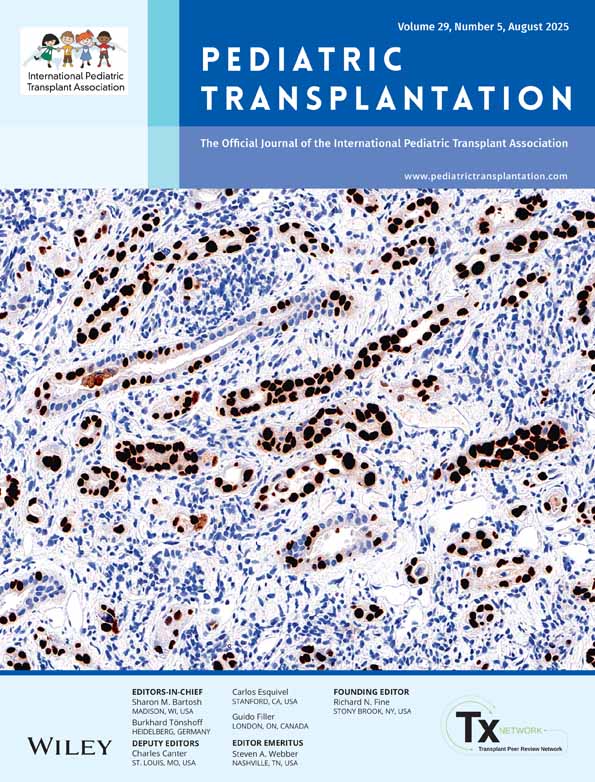Efficacy of Subcutaneous Immunoglobulin in the Postoperative Management After Pediatric Living Donor Liver Transplantation
Funding: The authors received no specific funding for this work.
ABSTRACT
Background
The usefulness of subcutaneous immunoglobulin (SCIG) for the treatment of hypogammaglobulinemia has been reported, but there are no reports in the field of pediatric liver transplantation (LT). We herein report the therapeutic efficacy of SCIG in the postoperative management after pediatric living donor LT (LDLT).
Methods
Subjects were 112 pediatric recipients who underwent LDLT between March 2012 and December 2021. SCIG administration was started in February 2017 and performed in 43 patients with hypogammaglobulinemia (< 870 mg/dL). Intravenous immunoglobulin (IVIG) administration was performed in 69 patients before January 2017. SCIG was administered subcutaneously at 130 (82–238) mg/kg/dose every week from postoperative day (POD) 2 until discharge.
Results
The preoperative serum IgG level in the SCIG group was 906 (249–1987) mg/dL, and the IgG level at the end of LDLT was 491 (246–823) mg/dL, showing a significant difference (p < 0.001). The median IgG levels in the SCIG group after LT were 697, 607, 579, 691, 665, and 795 mg/dL at 1, 2, 3, 4, and 5 weeks after surgery and after discharge, respectively. The incidence of bacteremia was significantly lower in the SCIG group than in the IVIG group (p = 0.025). The recipient's survival rate was not significantly different between the SCIG and IVIG groups (p = 0.080), but the recipient's survival rate in the SCIG group was 100%. The multivariate analysis revealed that the IVIG group and CMV viremia were a significant risk factors for bacteremia (p = 0.023 and 0.001, respectively).
Conclusions
Postoperative SCIG administration effectively maintained serum IgG levels and was useful for preventing bacteremia.
Conflicts of Interest
The authors declare no conflicts of interest.
Open Research
Data Availability Statement
The data that support the findings of this study are available from the corresponding author upon reasonable request.




